Debugging standard and proprietary serial buses in aerospace and avionic systems
The R&S®RTO6 oscilloscope has an in-depth tool for debugging custom and commercial off-the-shelf serial buses for the avionics and aerospace industries.

The R&S®RTO6 oscilloscope has an in-depth tool for debugging custom and commercial off-the-shelf serial buses for the avionics and aerospace industries.
Serial buses are now commonly used for data communications on aircraft and spacecraft. While many standards have been around for decades, DUTs still need to be tested for reliability. Physical layer problems can generate incorrect messages at the receiver. An incorrect sequence of events can confuse a receiver.
Reliability is very important in avionics. Control and communications buses need to be reliable and each design and subsystem must meet the criteria in standards such as MIL-STD-1553.
The communications performance for the entire bus system has to be verified and electrical parameter compliance tested. Reliability tests are essential to the development, installation and maintenance of bus systems.
Being able to time correlate the physical layer with the actual decoded messages across a link increases confidence in a design, all without needing to manually decode the bus.
R&S®RTO6 oscilloscopes are a powerful tool for debugging low-speed serial buses. The oscilloscopes can serve as a protocol analyzer able to see all time-correlated analog waveforms at once.
Avionic and aerospace specific buses
Over the years, aircraft data networks (ADN) have become more complex and have had meet ever more demanding requirements. Starting with analog, point-to-point connected systems, the avionics and aerospace industries now have a number of bus standards. Some standards, such as ARINC 429 and MIL-STD-1553, have been around for decades. Others, such as SpaceWire, are relatively new, and still others are proprietary. R&S®RTO6 oscilloscopes support all of these buses.
ARINC 429 and MIL-STD-1553
Both standards were drafted in the 1970s and are still widely used in the civil aerospace (CAS) and military aerospace (MAS) applications. ARINC 429 is defined for data rates of up to 100 kbits/s and MIL-STD-1553 supports higher data rates of up to 1 Mbit/s. MIL-STD-1553 also has a dual-redundant and bidirectional communications structure.
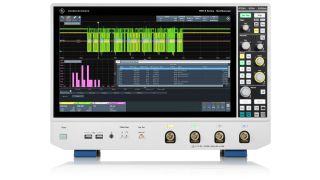
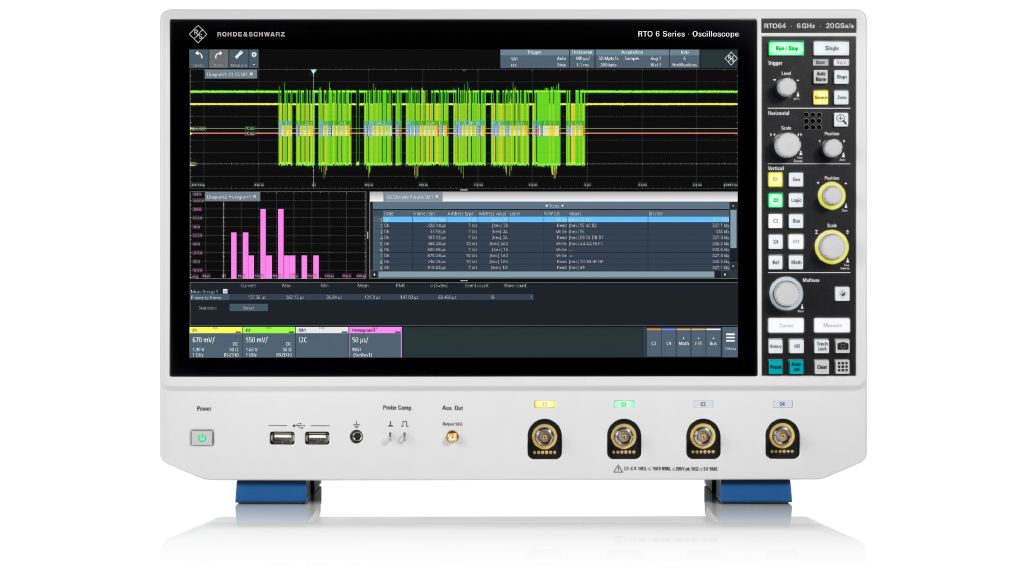
The R&S®RTO6 oscilloscope triggers and decodes continuous SpaceWire data streams.
SpaceWire
SpaceWire (SpW) is a more recent technical standard used on spacecraft. It provides high-speed links and networks with data rates up to 200 Mbit/s and more. SpW is based on the IEEE 1355-1995 standard and has been adapted to requirements for robustness, power consumption and EMC in outer space. When decoding a SpW data stream, the challenge is not missing the package identifier typically used as trigger. SpW also has a handshake, but if no errors occur, data transmission can be a gapless and random series of bits.
Rohde & Schwarz has developed a new synchronization algorithm that enables triggering on a continuous SpW data stream. The trigger conditions include control frames, data patterns, NULL frames, time codes and error conditions. R&S®RTO6 oscilloscopes are ideal for triggering and decoding continuous SpaceWire data streams.
Proprietary buses
Proprietary buses based on Manchester or NRZ coded protocols are also common in data and communications bus systems for aerospace and avionics systems. Finding a generic trigger and decode solution has long been a challenge. The R&S®RTO6 oscilloscopes can trigger and decode Manchester and NRZ coded serial buses with data rates up to 5 Gbit/s.
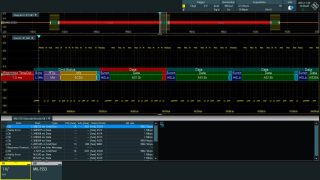
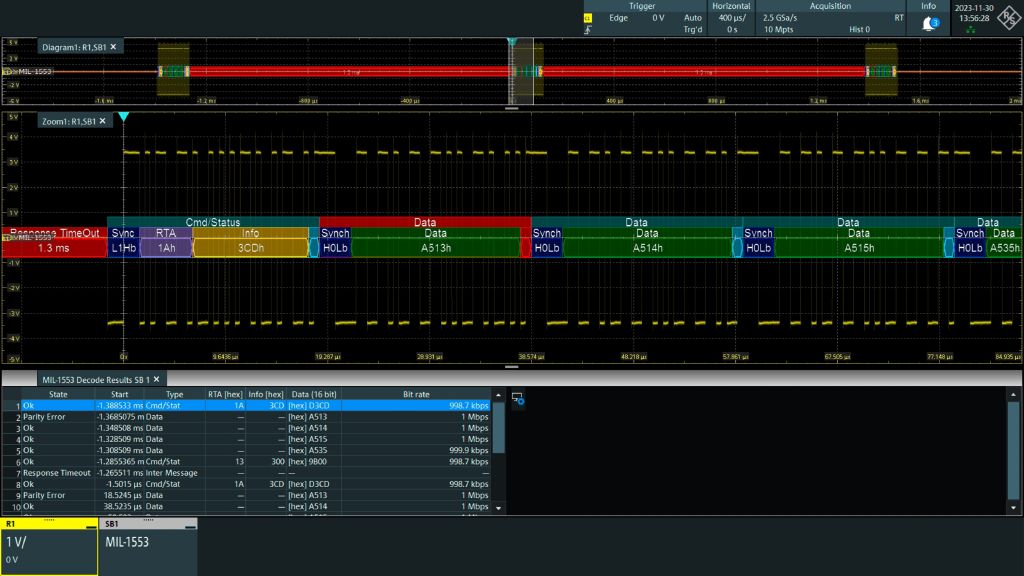
MIL-STD-1553 decode on the R&S®RTO6 oscilloscope showing data and control characters, control codes and error messages of a continuous data stream.
Powerful and easy-to-use R&S®RTO6 oscilloscopes are ideal for verifying electrical parameters in standard and proprietary serial buses and for monitoring and debugging entire bus systems. They can trigger and decode continuous SpaceWire data streams, making them a good fit for the aerospace and avionics industry.
Key features for serial trigger and decode
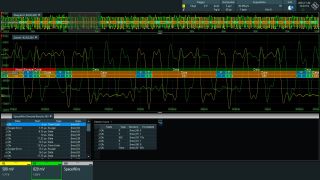
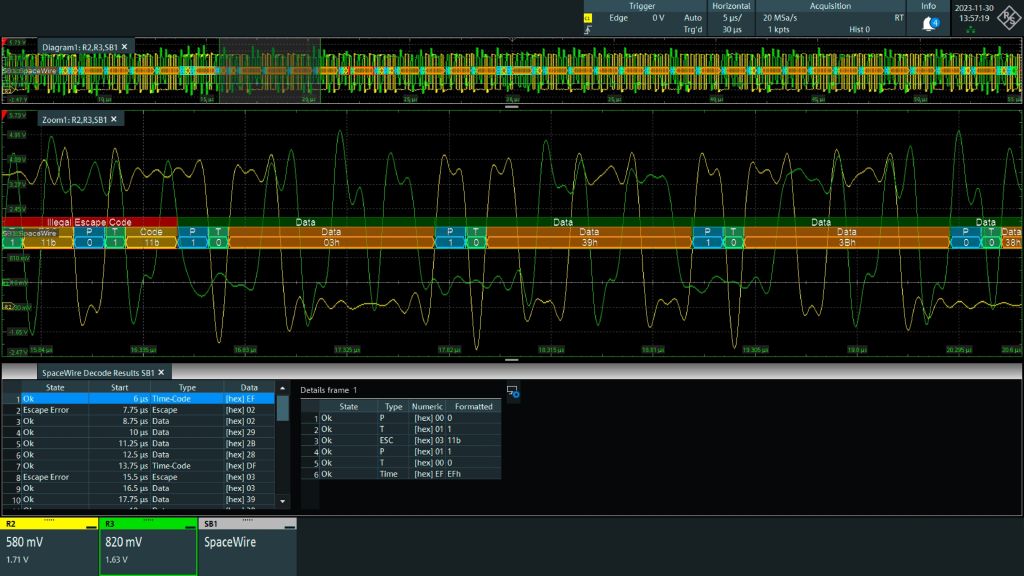
SpaceWire decode on the R&S®RTO6 oscilloscope showing data and control characters, control codes and error messages of a continuous data stream.